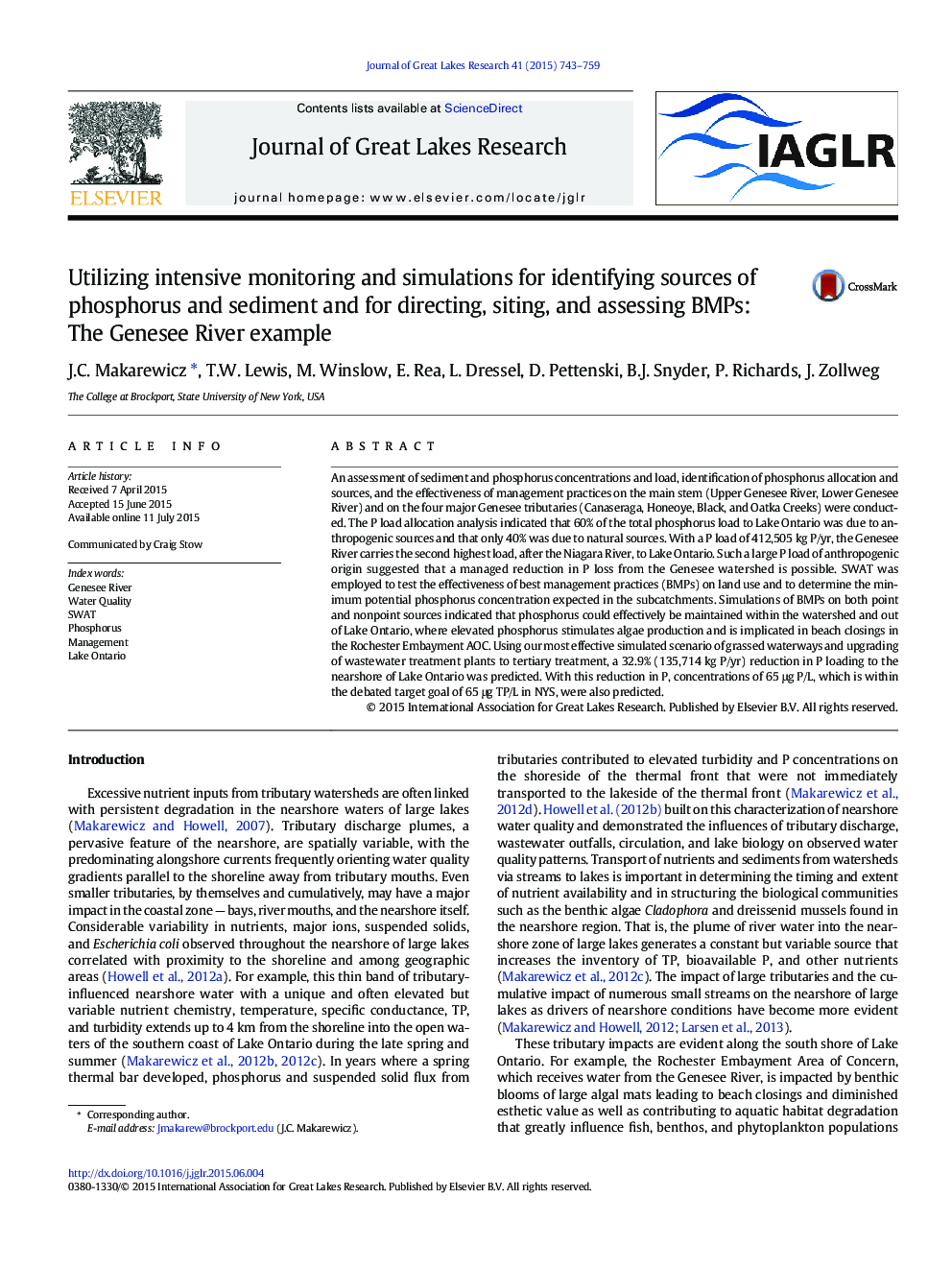| Article ID | Journal | Published Year | Pages | File Type |
|---|---|---|---|---|
| 6304947 | Journal of Great Lakes Research | 2015 | 17 Pages |
Abstract
An assessment of sediment and phosphorus concentrations and load, identification of phosphorus allocation and sources, and the effectiveness of management practices on the main stem (Upper Genesee River, Lower Genesee River) and on the four major Genesee tributaries (Canaseraga, Honeoye, Black, and Oatka Creeks) were conducted. The P load allocation analysis indicated that 60% of the total phosphorus load to Lake Ontario was due to anthropogenic sources and that only 40% was due to natural sources. With a P load of 412,505 kg P/yr, the Genesee River carries the second highest load, after the Niagara River, to Lake Ontario. Such a large P load of anthropogenic origin suggested that a managed reduction in P loss from the Genesee watershed is possible. SWAT was employed to test the effectiveness of best management practices (BMPs) on land use and to determine the minimum potential phosphorus concentration expected in the subcatchments. Simulations of BMPs on both point and nonpoint sources indicated that phosphorus could effectively be maintained within the watershed and out of Lake Ontario, where elevated phosphorus stimulates algae production and is implicated in beach closings in the Rochester Embayment AOC. Using our most effective simulated scenario of grassed waterways and upgrading of wastewater treatment plants to tertiary treatment, a 32.9% (135,714 kg P/yr) reduction in P loading to the nearshore of Lake Ontario was predicted. With this reduction in P, concentrations of 65 μg P/L, which is within the debated target goal of 65 μg TP/L in NYS, were also predicted.
Related Topics
Physical Sciences and Engineering
Earth and Planetary Sciences
Earth and Planetary Sciences (General)
Authors
J.C. Makarewicz, T.W. Lewis, M. Winslow, E. Rea, L. Dressel, D. Pettenski, B.J. Snyder, P. Richards, J. Zollweg,
